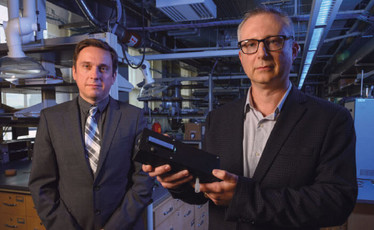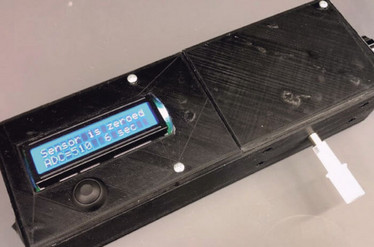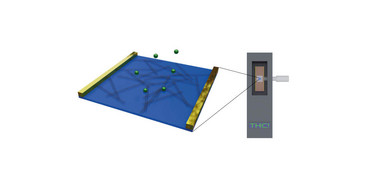Carbon Nanotubes for Cannabis Control
Freeing the roads of THC-intoxicated drivers, one breathalyzer test at a time
There is no reliable method for verifying cannabis intoxication at the roadside; rather, confirmation must be achieved using laborious, lab-based LC-MS methods. A portable THC detector could, therefore, streamline law enforcement efforts and protect the public. To that end, Alexander Star and colleagues have developed a handheld breathalyzer that uses carbon nanotubes to detect THC in human breath (1).
The initial model was assembled using an off-the-shelf electronic prototyping platform and 3D printed shell in a matter of weeks. “We wanted the first iteration of the prototype to be as simple and mechanically robust as possible,” says Star. “To our great surprise – and delight – we quickly discovered that consumer-grade components were more than capable of meeting our needs.”

So how does the device work? As users blow into a mouthpiece, much like an alcohol breathalyzer test, their breath is directed to a chamber containing a sensor chip with semiconductor-enriched single-walled carbon nanotube chemiresistors. As THC molecules interact with the nanotubes, a measurable change in electrical resistance is generated. To enhance selectivity for THC, the team added a delay to the sensor reading, which allows more volatile components of the breath, including water, carbon dioxide, and ethanol, to desorb from the chemiresistors surface. To further increase THC selectivity, the team employed machine learning algorithms.
“We collected most of our data in the laboratory using simulated breath samples,” says Star. And so now, the team is planning more extensive, real-world studies. “More prototype testing is needed to verify the efficacy of the device when detecting the small quantities of THC found in the breath of a recent smoker.”
But what about the correlation between THC concentrations in human breath and driving impairment? “Building reliable, handheld THC breathalyzers will be a crucial first step,” says Star.
- S I Hwang et al., “Tetrahydrocannabinol detection using semiconductor-enriched single-walled carbon nanotube chemiresistors”, ACS Sens, 8, 2084 (2019). DOI: 10.1021/acssensors.9b00762
Having thrown myself into various science communication activities whilst studying science at University, I soon came to realize where my passions truly lie; outside the laboratory, telling the stories of the remarkable men and women conducting groundbreaking research. Now, at Texere, I have the opportunity to do just that.














